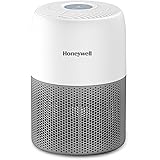Lifting equipment is essential in industries that require the safe handling of heavy loads, such as construction, logistics, and manufacturing. Two prominent tools in this category are spreader bars and lifting beams. While both are designed to assist in load-bearing tasks, they differ significantly in their structure, function, and applications. This article dives into the key differences in lifting equipment, helping you understand when to use a spreader bar versus a lifting beam. By clarifying their unique properties, we aim to guide you in selecting the right lifting tool for your specific requirements.
What Are Spreader Bars?
Spreader bars are horizontal bars that distribute a load across multiple points, enhancing load stability and reducing stress on lifting points. Typically used in overhead crane operations, spreader bars have a bar structure that holds slings or cables at a distance, allowing them to handle large, bulky loads without compromising safety.
- How Spreader Bars Work
A spreader bar works by spreading the load across multiple points, preventing any single point from bearing the entire weight. This not only ensures even distribution but also reduces the risk of structural damage to both the load and the equipment. Spreader bars are particularly valuable in situations where load distribution tools are required to keep fragile items stable during transport. - Advantages of Spreader Bars
Spreader bars offer significant advantages when lifting loads that require horizontal stability. They are ideal for lifting objects that might buckle or deform if lifted from a single point. By using a spreader bar, industries can achieve safer lifting operations, as the distributed load is less likely to cause stress or damage. They are essential in construction rigging tool setups, where handling large items safely is a priority.
What Are Lifting Beams?
Lifting beams are devices that provide vertical support, offering a centralized load-bearing point. Unlike spreader bars, which rely on horizontal distribution, lifting beams support loads from a central point, making them suitable for handling unevenly shaped or extremely heavy items.
- How Lifting Beams Function
Lifting beams are designed with a rigid structure, providing a solid point from which loads can be suspended. This setup is particularly useful when a load needs to be lifted vertically and when a stable center of gravity is crucial for safety. Commonly used in heavy load handling tools, lifting beams accommodate different lifting configurations, allowing multiple slings or chains to attach to the beam. - Benefits of Using Lifting Beams
The primary benefit of lifting beams is their ability to centralize the load, making them suitable for heavy, concentrated weights that require stability. Lifting beams are often used in manufacturing and industrial applications where bulky machinery or equipment needs to be lifted safely. This vertical stability ensures that loads remain balanced, even if the weight distribution is uneven.
Key Differences Between Spreader Bars and Lifting Beams
Understanding the differences between spreader bars and lifting beams is essential for making the right choice in lifting equipment. Here’s a comparison based on structural design, load handling, and typical applications.
- Structural Design
Spreader bars have a horizontal structure that connects to two or more lifting points, enabling the load to be spread over a wider area. Lifting beams, however, have a solid, rigid design that supports the load from a central lifting point. This distinction makes spreader bars better suited for wide or fragile loads and lifting beams ideal for centralized, vertical lifting. - Load Handling
Spreader bars are used for horizontal load distribution, where multiple attachment points allow the load to be handled without stressing any single point. In contrast, lifting beams are more suited for centralized lifting, where the entire load is carried from a single, stable point. - Applications
Spreader bars are commonly applied in scenarios where even weight distribution is crucial, such as lifting construction materials or delicate items. Lifting beams, on the other hand, are better for lifting machinery or bulk loads in confined spaces where vertical stability is necessary.
When to Use Spreader Bars vs. Lifting Beams
The choice between spreader bars and lifting beams often depends on the specific requirements of the lifting task, as well as safety considerations.
- When to Use Spreader Bars
Spreader bars are ideal when the load needs to be distributed across multiple points, particularly for fragile or delicate items that may be damaged if lifted from a single point. They are commonly used in industries that handle large and irregularly shaped items, such as in construction rigging or shipping. - When to Use Lifting Beams
Lifting beams are suitable for heavy and awkwardly shaped items that require vertical stability. They are often found in manufacturing and industrial settings where the load’s weight needs to be centered for balance. For example, lifting beams are beneficial in environments where bulky machinery needs to be lifted without tilting or swaying.
Safety Considerations for Spreader Bars and Lifting Beams
Safety is paramount when using either spreader bars or lifting beams, as improper handling or attachment can lead to accidents or equipment damage.
- Safety Tips for Spreader Bars
When using spreader bars, ensure that all slings and cables are correctly attached, and avoid exceeding the load capacity. Regular inspections are crucial to detect any signs of wear or damage. Ensuring that load stability is maintained throughout the lift can prevent accidents and improve operational efficiency. - Safety Tips for Lifting Beams
For lifting beams, always verify that the load is securely attached at the central point. Regular maintenance is essential to ensure the structural integrity of the beam, as any weakening in the material can compromise safety. Ensure all operators are trained in using safe lifting practices and adhere to guidelines for weight distribution.
Choosing the Right Equipment for Your Needs
Selecting the appropriate equipment between spreader bars and lifting beams requires a clear understanding of load type, weight, and lifting environment. Each tool has specific applications, and using the right one can make lifting safer and more efficient.
- Evaluating Load Requirements
Consider the shape, weight, and fragility of the load. Spreader bars are better suited for wide or delicate loads, while lifting beams are ideal for heavier loads that need centralized support. - Consulting a Specialist
If you’re unsure, consulting a lifting equipment specialist can provide guidance on the best equipment for your lifting needs. They can assess your environment and recommend a solution that maximizes safety and efficiency.
Real-Life Applications of Spreader Bars and Lifting Beams
To give a clearer picture, here are some real-world applications where spreader bars and lifting beams prove beneficial.
- Spreader Bars in Construction and Shipping
In construction, spreader bars are commonly used to lift wide loads such as beams, trusses, and panels, ensuring that the load remains stable throughout the lift. In shipping, they are used to handle large containers, providing load stability and preventing damage to sensitive goods. - Lifting Beams in Manufacturing
Lifting beams are commonly found in manufacturing plants where heavy machinery or parts need to be moved. Their centralized lifting point provides the necessary stability for vertical lifts, ensuring the safe handling of bulky or unevenly distributed weights.
FAQs
What is the difference between a spreader bar and a lifting beam?
The main difference lies in how they handle loads: spreader bars distribute the load across multiple points, while lifting beams centralize it at a single point. Each has specific applications depending on load type and stability needs.
Which is safer: a spreader bar or a lifting beam?
Both are safe when used correctly. Spreader bars excel in distributing loads horizontally, while lifting beams are ideal for centralized lifts. Proper training and adherence to safety guidelines are essential for both.
When should I use a spreader bar over a lifting beam?
Use a spreader bar when lifting wide, delicate, or irregularly shaped items that require even weight distribution. They’re ideal for handling fragile loads in construction or shipping.
Can spreader bars handle heavy loads?
Yes, spreader bars are designed to handle heavy loads by distributing the weight across multiple lifting points, making them suitable for large and fragile items.
Are spreader bars and lifting beams interchangeable?
Not necessarily. Each tool has unique functions: spreader bars are for load distribution while lifting beams are for centralized support. Choosing the right
Milton Flip Lid 500 Thermosteel Vacuum Insulated Double Walled Flask with Drinking Cup lid & Jacket,1000 ml Water Bottle,24 Hours Hot & Cold,Easy to Carry,Easy Grip,Rust Proof,Tea,Travel Bottle,Silver
₹647.00 (as of 14 November, 2024 18:27 GMT +05:30 - More infoProduct prices and availability are accurate as of the date/time indicated and are subject to change. Any price and availability information displayed on [relevant Amazon Site(s), as applicable] at the time of purchase will apply to the purchase of this product.)Honeywell Air Purifier for Home & Office, 3-in-1 filter - Pre-Filter, H13 HEPA Filter, Activated Carbon Filter, Removes 99.99% Pollutants, Allergens, Pet Danger, Smoke, Dust & Pollens - Air touch V1
₹4,987.00 (as of 14 November, 2024 18:26 GMT +05:30 - More infoProduct prices and availability are accurate as of the date/time indicated and are subject to change. Any price and availability information displayed on [relevant Amazon Site(s), as applicable] at the time of purchase will apply to the purchase of this product.)GIGAWATTS 10.5 MTR/38 LED String Light 360° Copper Power Pixel 35 Feet Serial Decorative Fairy Lights for Home Diwali Christmas Festival Wedding Party & Garden (Pack of 1, Warm White)
₹89.00 (as of 14 November, 2024 18:26 GMT +05:30 - More infoProduct prices and availability are accurate as of the date/time indicated and are subject to change. Any price and availability information displayed on [relevant Amazon Site(s), as applicable] at the time of purchase will apply to the purchase of this product.)Amazon Brand - Presto! Garbage Bags Medium 180 Count|19 x 21 inches Black , For Dry & Wet waste|30 bags/roll (Pack of 6)
₹335.00 (as of 14 November, 2024 18:27 GMT +05:30 - More infoProduct prices and availability are accurate as of the date/time indicated and are subject to change. Any price and availability information displayed on [relevant Amazon Site(s), as applicable] at the time of purchase will apply to the purchase of this product.)Amazon Brand - Solimo Wax Tealight Candles, 3-Hour Burn Time, Smokeless, No Residue (Set of 100, Unscented)
₹379.00 (as of 14 November, 2024 18:27 GMT +05:30 - More infoProduct prices and availability are accurate as of the date/time indicated and are subject to change. Any price and availability information displayed on [relevant Amazon Site(s), as applicable] at the time of purchase will apply to the purchase of this product.)Discover more from The General Post
Subscribe to get the latest posts sent to your email.





